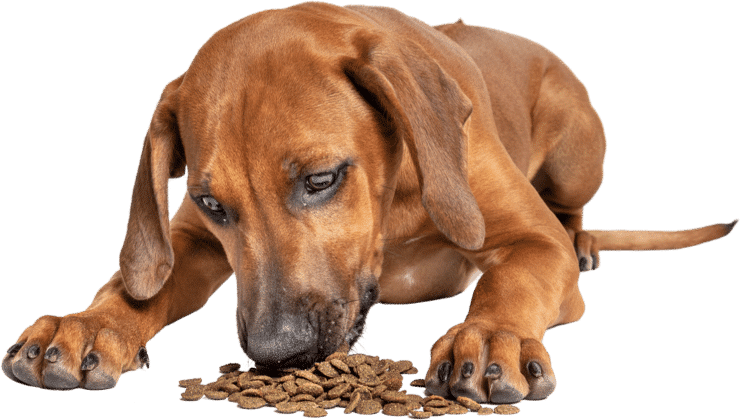If you’ve ever had a dog with an ear infection, you know how uncomfortable it can be. Head shaking, scratching, that unmistakable smell; it’s not fun for anyone. And for some dogs, it’s not a one-off, ear infections keep coming back, despite drops, cleans, and vet visits.
So what’s actually going on?
There are two main reasons dogs get recurring ear infections:
- Underlying allergies (food or environmental)
- Breed-specific anatomy (like floppy ears or narrow canals)
Let’s unpack both.
Allergies: The Hidden Cause Behind Many Ear Infections
Allergies are one of the most common reasons for chronic or recurring ear infections in dogs.
When your dog’s immune system reacts to something like a food protein, pollen, dust mites, mould, it triggers inflammation. That includes the skin inside the ears. Inflamed ear canals become warm and moist, creating the perfect environment for yeast and bacteria to thrive. The result? Otitis externa, a painful infection of the outer ear.
In fact, allergies (especially atopic dermatitis) are behind up to 75% of recurring ear infections in dogs. Food allergies often show up as chronic ear issues rather than gut symptoms.
Signs the infection may be allergy-related:
- Year-round flare-ups (possible food allergy)
- Seasonal patterns (likely environmental allergy)
- Both ears affected
- Itching in other areas (paws, belly, face)
- Frequent recurrence after treatment
Sources: Miller et al., 2013; AKC; Olivry et al., 2010; Verlinden et al., 2006
Breed-Specific Ear Infections: When Ears Work Against Them
Some dogs are simply built in a way that makes ear infections more likely, even without allergies. Breeds with floppy ears, hairy canals, or narrow ear structures often struggle to keep the ears dry and ventilated.
Breeds prone to ear infections include:
- Cocker Spaniels
- Labradors and Golden Retrievers
- French Bulldogs
- West Highland White Terriers (Westies)
- Basset Hounds
- Beagles
- Poodles
- Shar Peis
Here’s why:
- Floppy ears (like in Labs and Basset Hounds) limit airflow, trapping heat and moisture.
- Hairy canals (common in Poodles) can trap wax and debris.
- Narrow ear canals (like in Bulldogs and Shar Peis) make drainage harder and create a warm, enclosed space where yeast and bacteria thrive.
Muller & Kirk’s Small Animal Dermatology, 7th Ed.; Olivry et al., 2010
What You Can Do to Help
Whether your dog is allergy-prone or just born with tricky ears, here are some things that can make a difference:
- Clean ears regularly using a vet-approved solution
- Dry ears thoroughly after swimming or bathing
- Use a low allergenic diet if food allergies are suspected
- Talk to your vet about allergy testing if infections are chronic (definitely talk to your vet about ear infections, right from the start)
- Watch for early signs like head shaking or ear odour and treat early
For many dogs, switching to a novel, low allergenic protein (like insect protein) can help reduce inflammation and break the cycle of food-triggered infections.
